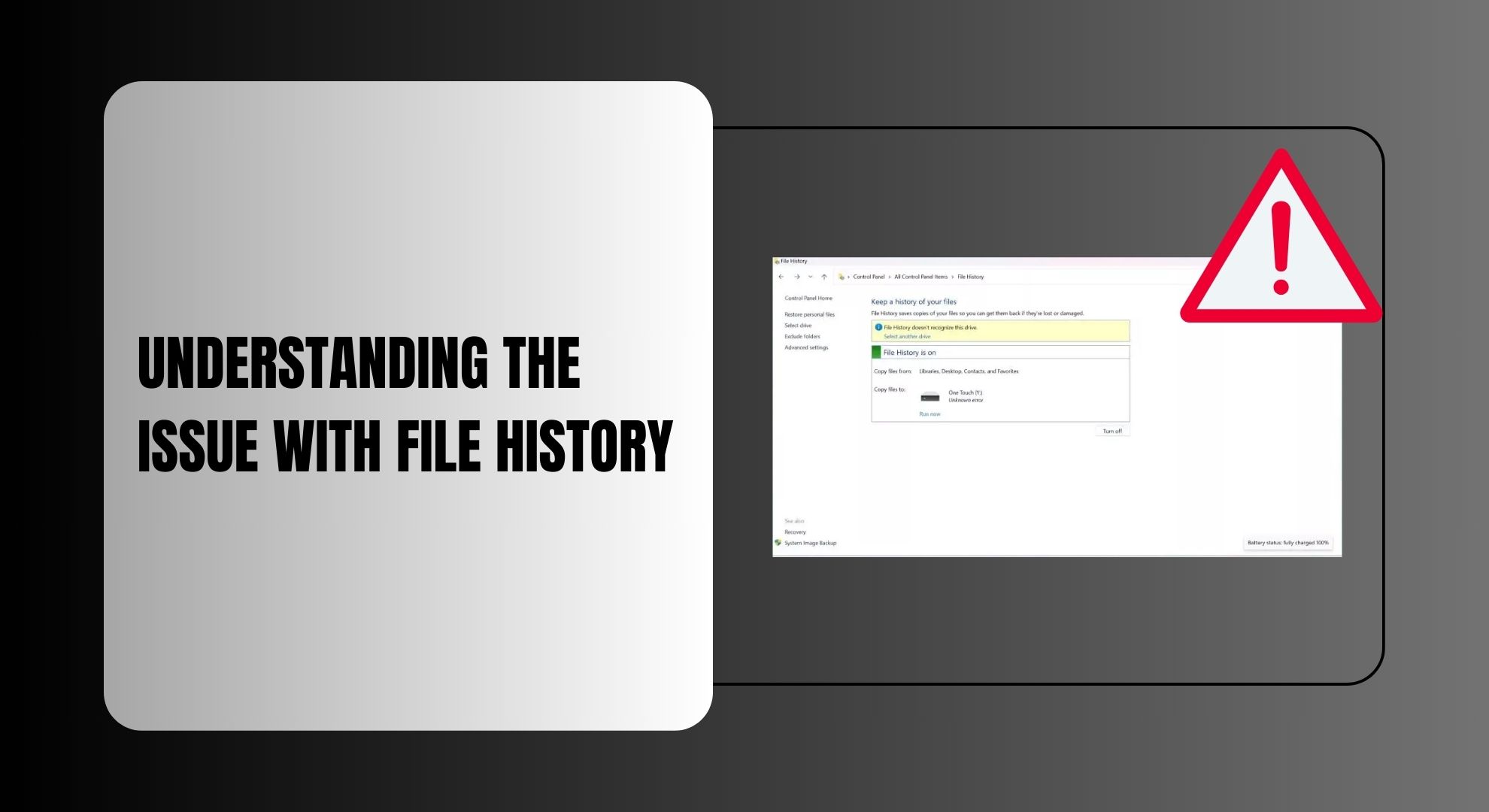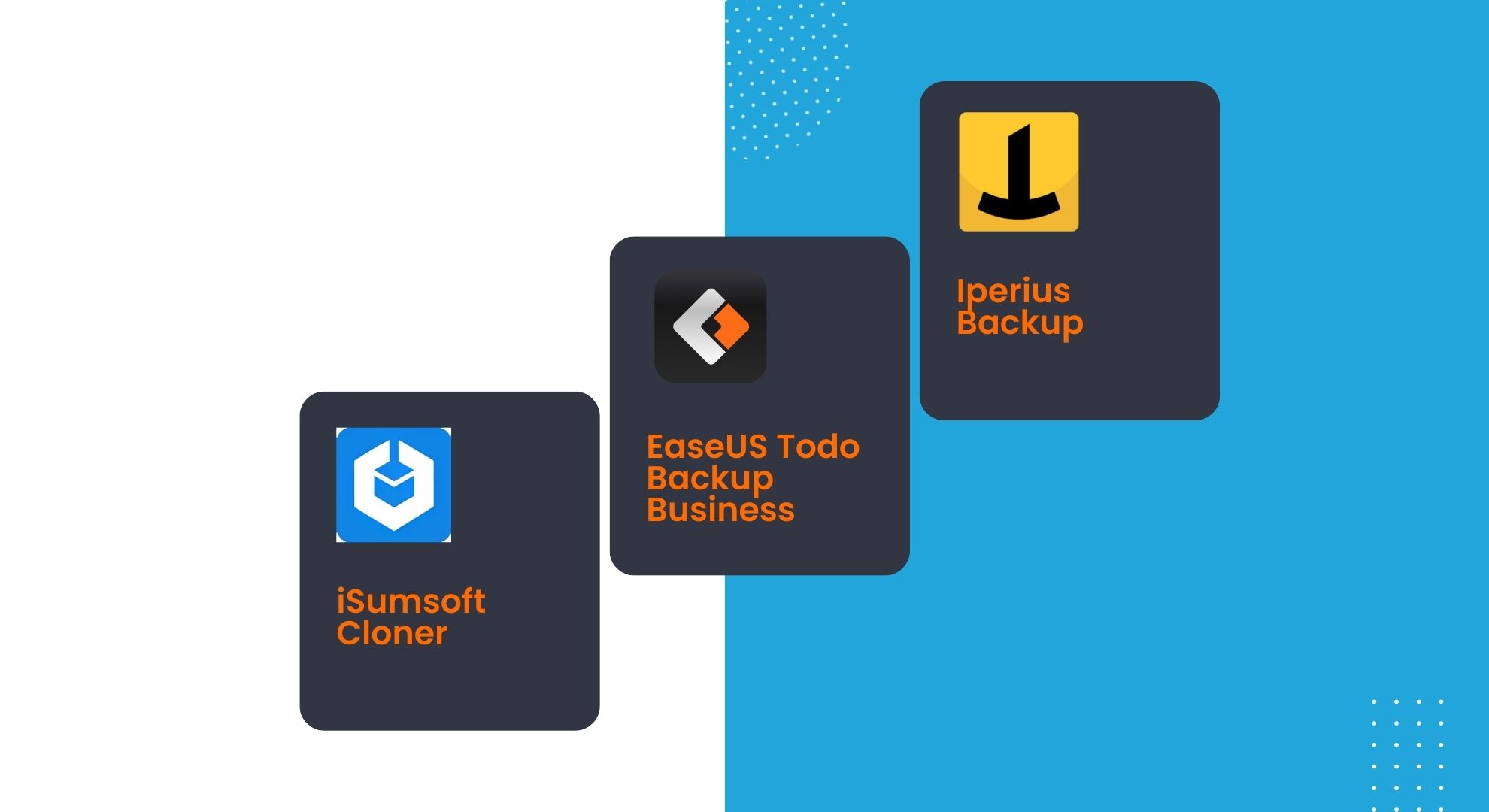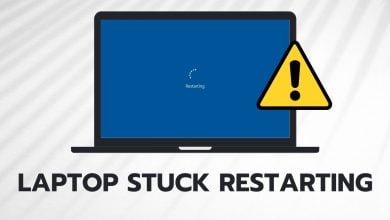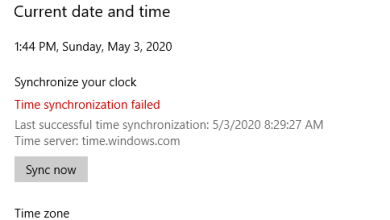5 Fixes for “File History Doesn’t Recognize this Drive” Error
- Sometimes, File History might not recognize a drive, which could be due to reasons such as accidental disabling of File History, poor drive connections, or outdated configurations.
- Check that File History is turned on in the Control Panel and that Windows correctly connects and recognizes the drive. Regularly check and maintain necessary services like Windows Search and File History to ensure they are active and set to start automatically.
- When File History does not meet your needs, or you encounter issues, consider using alternative backup solutions. Tools like iSumsoft Cloner can offer more flexible and reliable options for backing up your data.
Windows‘ File History feature offers a simple way to back up files to external drives, protecting your data against accidental loss or damage. Users often encounter a frustrating issue where File History fails to recognize the backup drive.
This blog post explores some practical solutions to resolve the “File History does not recognize this drive” error, ensuring your data remains secure and permanently retrievable. Whether you’re a seasoned tech enthusiast or a casual user, these steps will help you fix this common problem and maintain data backups.
Table of Contents
Understanding the issue with File History

File History is an essential tool in Windows that helps users automatically back up versions of their files to an external drive or network location. When File History fails to recognize a connected drive, it can stop backups, leaving your data unprotected. This issue can come from several causes, from system settings to physical hardware problems.
File History not recognizing a drive is a common issue that can disrupt your data backup routine. Several factors might contribute to this problem:
- Accidental disabling: Sometimes, File History might be unintentionally turned off, preventing it from detecting any connected drives.
- Connection issues: A loosely connected drive or a faulty USB port can result in File History failing to recognize the drive.
- Drive damage: If the external drive is physically damaged, the system may not detect it.
- Disabled file indexing: For File History to function correctly, file indexing should be enabled. If it’s turned off, the system may not recognize the drive.
- Backup clutter: The accumulation of old File History backups can clutter the drive, making it unrecognizable to the system.
READ MORE: What is an EMZ File? 4 Ways to Open It in 2024 ➜
How to fix “File History does not recognize this drive”
When you face this error, it’s essential to approach the solution logically. This issue can prevent you from backing up your files using Windows’ File History feature, potentially risking data loss. Fortunately, there are several fixes you can try to resolve the problem effectively. Here are a few practical fixes that can help you get File History back on track:
1. Ensure File History is enabled
When “File History does not recognize this drive” appears, the initial step is verifying whether it is active, as it might have been disabled accidentally. Ensuring File History is enabled is crucial as it allows the system to detect and communicate with the designated backup drive automatically.
Here are the steps to check and reactivate File History if necessary:
- Open the Start menu, type “Control Panel,” and click “Open” to launch the Control Panel.

Open Control Panel - Open “System and Security“.

Open System and Security - Then, choose “File History” from the list.

Click on File History - In the File History window, check if the feature is turned off.

Check if it is turned off - If it is, you will see a “Turn on” button; click on it to activate File History. This should help the system to recognize the drive and enable you to start or resume automatic backups.

Click Turn On
2. Check the drive connection
If File History doesn’t recognize your drive, a common issue could be the connection of the USB drive. An incomplete connection or a faulty USB port can prevent File History from detecting the drive correctly. Here’s how to address this:
↪ Reconnect the USB drive

Physically disconnect the drive from your computer and then reconnect it. Try using a different USB port, especially if you suspect the current port might be malfunctioning.
↪ Reconfigure File History
- Open File History from the “Control Panel.

Open Control Panel - Click on “Stop” using Drive. This action disconnects your current backup drive.

Click on Stop - Select “Run now” to re-add your drive. If the initial port was the issue, File History should now recognize the drive.

Click “Run Now”
You can resolve recognition issues and safeguard your backups by ensuring a stable connection and correctly configuring your drive with File History.
READ MORE: How to Access Google Drive With FTP – Easiest Method [2024] ➜
3. Choose an alternate backup drive
If File History continues to fail to recognize your primary backup drive, selecting an alternate drive can often resolve the issue. This method ensures that the problem isn’t with the original drive itself, whether due to hardware issues or other errors. Here’s how to switch to a different backup drive:
- Open the Control Panel and click on “System and Security.

Open System and Security - Then select “File History.”

Click File History - Within File History, look for the “Select drive” option.

Click Select drive - A list of available drives will appear. Select a drive that you want to use as your new backup location. Ensure that this drive is functional and has sufficient space for your backups.

Select the drive - After selecting your new drive, click “OK” to save the changes. File History will now use the new drive for all future backups.

Click OK
READ MORE: How to Stop Google Photos Backup on Mobile & Desktop ➜
4. Activate necessary services
If File History and Windows Search services are disabled, they can prevent File History from functioning correctly. Activating these services can resolve issues with drive recognition and backup processing. Here’s how to ensure these crucial services are running:
- Press Win + R to open the Run dialog box. Type “services.msc” and press OK to launch the Services management console.

Type services.msc and press enter - Scroll through the list of services to find “File History Service.” Double-click on it to open its properties.

Click on File History Service - In the properties window, set the Startup type to “Automatic” and click “Start” if the service is not already running. Then click “OK” to save your changes.

Click OK - Similarly, find the “Windows Search” service. Double-click to open its properties, set the Startup type to “Automatic,” and start the service if it’s not running. Save changes by clicking “OK.”

Choose the options and click OK
5. Clear File History configuration
Sometimes, resetting File History by clearing its configuration files can solve recognition issues. This method effectively resets File History settings, removing any corrupt configurations that might be causing the problem:
- Open File Explorer, go to the “View” tab, and check the box for “Hidden items.”

Click the check box next to Hidden items - Go to C:\Users\[YourUsername]\AppData\Local\Microsoft\Windows\FileHistory\Configuration.

Go to the Address - In the “Configuration” folder, select all files and “Delete” them. This step removes the existing configuration settings for File History.

Click Delete - Open File History from the Control Panel again. You may need to reconfigure your backup settings, as the previous configurations have been cleared.

Configure the Drive again
READ MORE: How to Enable or Disable the File History in Windows 10? ➜
Alternative backup solutions

When File History doesn’t meet your needs or you encounter issues, consider alternative backup programs that can provide more potent and reliable backup solutions.
Tools like iSumsoft Cloner, EaseUS Todo Backup Business, and Iperius Backup offer advanced features like system partition backups, drive cloning, and creating boot disks essential for comprehensive data protection.
Many alternative programs allow you to create full system images, enabling a complete restoration of your operating system, applications, and files in case of a major failure or disk replacement. These tools often support incremental, scheduled, and cloud backups, providing flexibility in how and when you save your data.
READ MORE: How to Create Windows 7/8/10/11 Image Backup For FREE? ➜
Final thoughts
Encountering the “File History does not recognize this drive” error can be frustrating, but understanding the causes and implementing the right solutions can quickly resolve the issue.
By checking File History settings, ensuring proper drive connections, and considering alternative backup solutions, you can safeguard your data against potential losses. Regular backups protect your valuable information from unexpected failures or errors.
FAQs
File History supports NTFS-formatted drives. If your drive is formatted with another file system, such as FAT32 or exFAT, File History may not recognize it. Reformatting the drive to NTFS could resolve the issue.
Clearing the File History configuration folder removes potentially corrupted settings that could be causing issues with drive recognition. This reset can help File History to start fresh, potentially resolving persistent errors.
By default, File History backs up files every hour, but you can customize this frequency in the File History settings to suit your needs, ranging from every 10 minutes to daily.
If backups are slow, consider reducing the amount of data being backed up, improving your drive connection speed, or checking for system resource issues that may be affecting performance.
Open the Run dialog by pressing Win + R, type services.msc, and hit Enter. In the services list, locate and double-click on Windows Search and File History services. Set their startup types to “Automatic” and start them if they’re not already running. This ensures they will automatically run at system startup.
 Reviewed by
Reviewed by 




